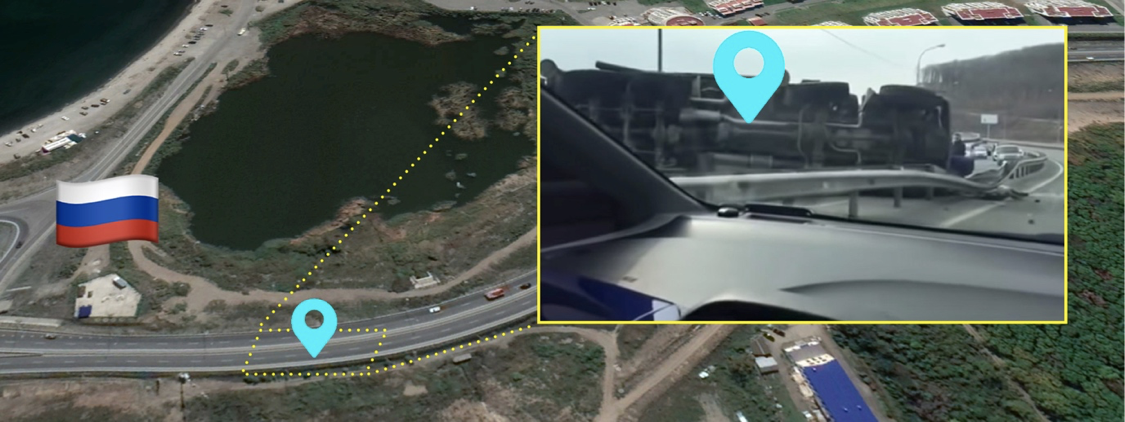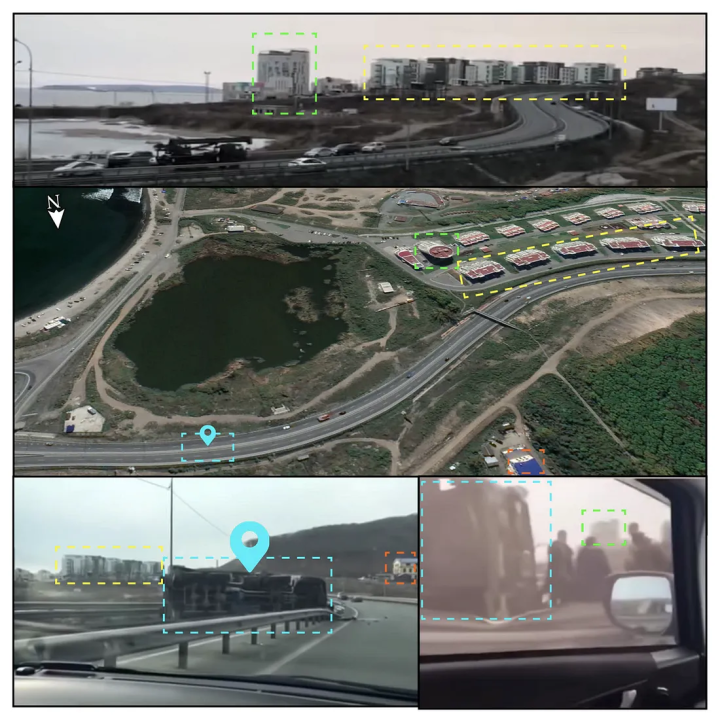Pantsir-ious Problem: Russian Missile System in Road Accident
Online videos tell a story of a crashed Pantsir in Vladivostok
Pantsir-ious Problem: Russian Missile System in Road Accident

BANNER: (Source: @LAndriukaitis via GoogleMaps, background; Primamedia/Archive, right)
A Russian-made, medium-range, surface-to-air missile Pantsir-S1 system (NATO reporting name: SA-22 Greyhound) was involved in a road crash on or around March 11, 2019, in the Russian city of Vladivostok, as revealed by photos and videos that appeared on various social media platforms following the event.
News articles reporting on the event soon followed, claiming that either driver error or the poor condition of the road itself caused the accident. Open-source analysis of the surfaced social media posts confirmed some of these claims, as local residents posted videos and photos of the scene from many different locations and angles online.
A visual comparison of the crashed vehicle in the surfaced imagery with verified photos of the Pantsir system confirmed that the former was a Pantsir.

Some of the details revealed in the articles covering the incident allowed for quick geolocation. One of the articles mentioned that the route to Patrokl Bay (Бухта Патрокл) was congested for some time because of the crash. The bridge and the bay area seen in the video confirmed the location to be near the route to Patrokl Bay.

The other video also revealed a collection of buildings not far away from the location of the crashed Pantsir. The DFRLab geolocated the crash to the southern part of Vladivostok.

The official account of the incident, as presented by the Ministry of Internal Affairs (MIA), claimed that driver error caused the crash. Local media, however, suggested that the poor condition of the road may have served as the primary catalyst. Local media sources also mentioned that sunken tarmac caused the driver to lose control, yet no signs of damage to the road were visible in the photos or in the satellite imagery. Following the accident, several VKontakte users blamed the chassis of the KAMAZ-6560 8×8 vehicle for the crash, claiming that its high center of gravity renders it unsuitable and unreliable for the Pantsir system.
Conclusion
The real reason behind the crash of the Pantsir in Vladivostok is unknown at the moment, as the MIA and local media presented two disparate accounts of the incident. Open-source analysis confirmed, however, that the crash did take place and its exact location.
Furthermore, photos and satellite imagery did not show visible damage to the road. The lack of visible damage suggests that, while driver error may have been a contributing factor to the crash, the system itself underperformed by crashing on a clear road in relatively good condition. This incident is not the first in which a Pantsir system failed to operate effectively. The DFRLab has previously reported on two Israeli strikes that took out Pantsir systems without much difficulty.
Register for the DFRLab’s upcoming 360/OS summit, to be held in London on June 20–21. Join us for two days of interactive sessions and join a growing network of #DigitalSherlocks fighting for facts worldwide!

